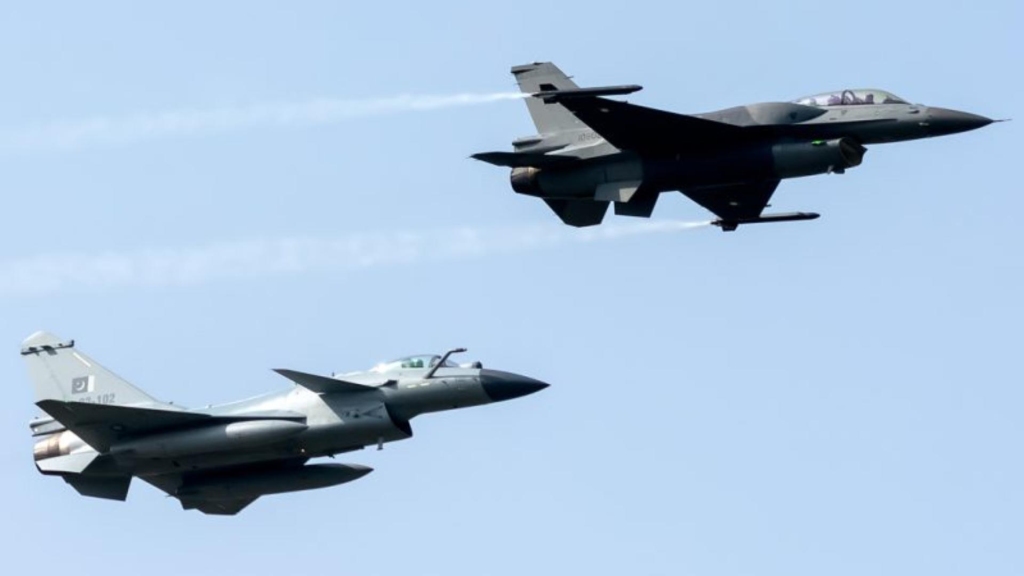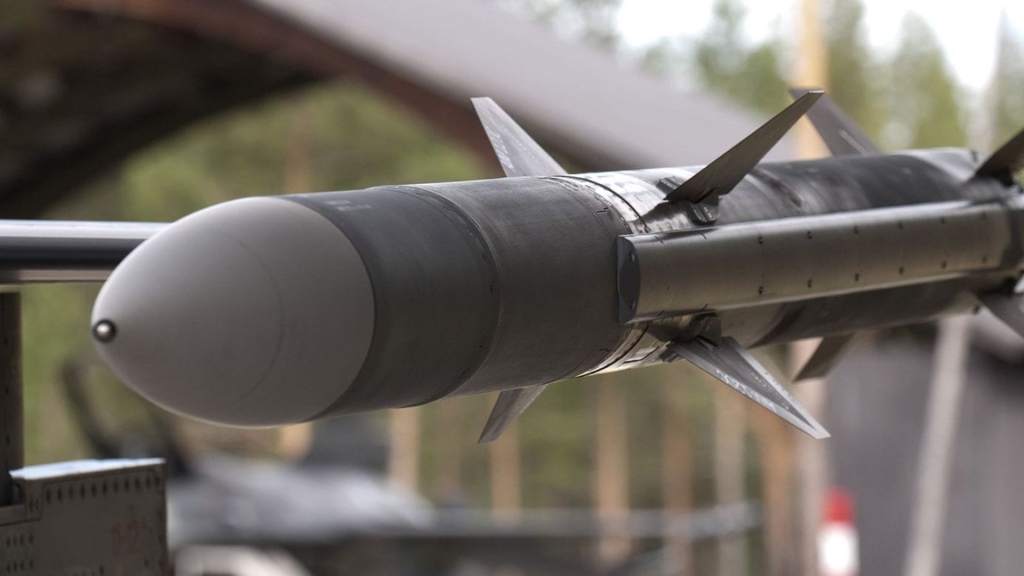7220Views

GIDS FAAZ and FAAZ-2 Air-to-Air Missiles
The FAAZ-series are two beyond-visual-range air-to-air missile (BVRAAM) programs being developed by Pakistan’s state-owned enterprises (SOE), likely Air Weapons Complex (AWC), a bureau of the National Engineering and Scientific Commission (NESCOM). Global Industrial and Defence Solutions (GIDS), an SOE representing NESCOM, is marketing the FAAZ-1 and FAAZ-2 for export.
It seems that the FAAZ-1 and FAAZ-2 are being developed to support the long-term requirements of the Pakistan Air Force (PAF), especially as it embarks on locally sourcing its munitions, including air-launched cruise missiles (ALCM), precision-guided bombs (PGB), and laser-guided bombs (LGB).
GIDS FAAZ Design Background
Currently, there are two overarching variants of the FAAZ being developed: FAAZ-1 and FAAZ-2.
The FAAZ-1 seems to bear aesthetic similarities with the Chinese SD-10A. However, it is not known to what extent Pakistan used the SD-10A’s technology to develop the FAAZ.
Under the FAAZ-1 program, there appears to be two sub-variants: an active-radar homing (ARH) version and an imaging infrared (IIR)-equipped AAM. Both FAAZ-1 sub-variants offer a range of 100 km.
In 2023, GIDS revealed that an improved version called the ‘FAAZ-2’ was also under development. This new AAM would offer a range of 180 km and, like the FAAZ-1, offer two-seeker options: ARH and IIR. It will offer a maximum speed of Mach 3.5. GIDS did not reveal when the FAAZ-2 will be tested.
GIDS FAAZ Specifications
FAAZ-1 Specifications
Maximum Range: 100 km
Propulsion: TBC (likely solid fuel rocket motor / dual-pulse rocket motor)
Guidance: Optionally ARH or IIR
Maximum Speed: TBC
Weight: TBC
Length: TBC
FAAZ-2 Specifications
- Maximum Range: 180 km
- Propulsion: TBC (likely solid fuel rocket motor / dual-pulse rocket motor)
- Guidance: Optionally ARH or IIR
- Maximum Speed: Mach 3.5
- Weight: TBC
- Length: TBC
Key Capabilities of the FAAZ-IR/FAAZ-RF/FAAZ-2
Domestic Rocket Motor Development
With GIDS marketing both FAAZ-series for export, one can assume that there is an intentional effort towards developing an indigenous rocket motor stack. The FAAZ-series would likely use a dual-pulse rocket motor (DPMR) set up similar to other solid-fuel AAMs offered elsewhere in the world.
Without a domestic DPMR stack, Pakistan would not be able to market or export these missiles with any serious level of commitment. AAMs with imported key inputs would, ultimately, be subject to third-party or external-party pressures, which could limit their commercial viability.
Moreover, with a parallel focus on surface-to-air missile (SAM) development, one could see a scenario where Pakistan can scale a potential DPMR investment across multiple applications. In turn, each main application (e.g., AAM and SAM) could drive large production orders, therefore distributing the research and development overhead and, subsequently, controlling unit costs.
Long-Range Targeting and Engagement
With the stated range of the FAAZ and FAAZ-2 being 100 km and 180 km, respectively, it appears that the PAF wants credible long-range air-to-air reach. Currently, the PAF’s longest-ranged operational AAM is the PL-15E, which is deployed from the J-10CE and, potentially, JF-17C Block-3. The PL-15E has a maximum range of 145 km. On paper, the FAAZ-2 would exceed this range by a significant margin.
Usable as Surface-to-Air Missiles (SAM)
GIDS also has a ‘FAAZ-SL’ program, which apparently repurposes the FAAZ as a short-range SAM with a range of 20-25 km. If Pakistan intends to develop critical inputs like the rocket motor, then it makes sense for it to scale the use of that technology across as many applications as possible, from AAMs to SAMs.
For More Pakistan Air Force News and Analysis
November 23, 2025
October 15, 2025
October 6, 2025
September 21, 2025







